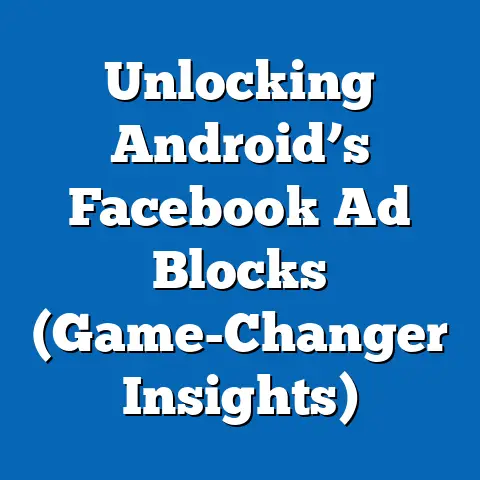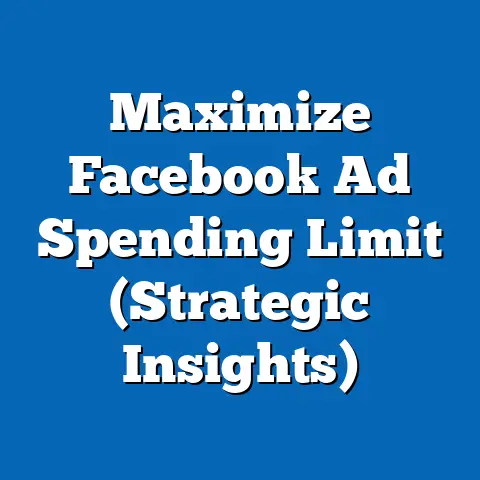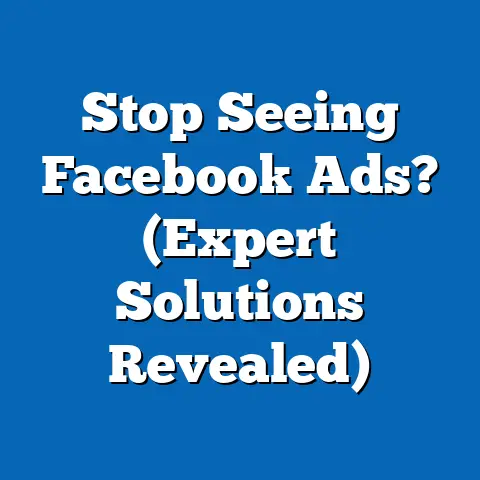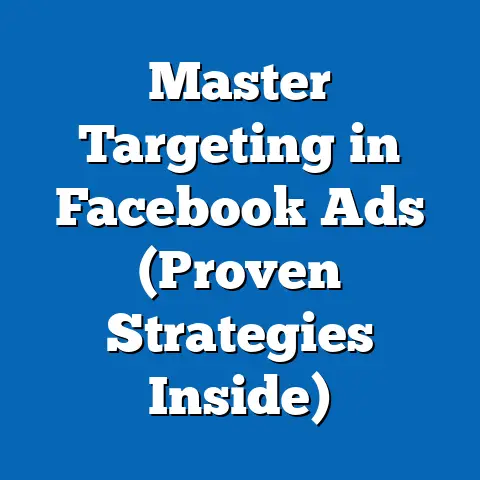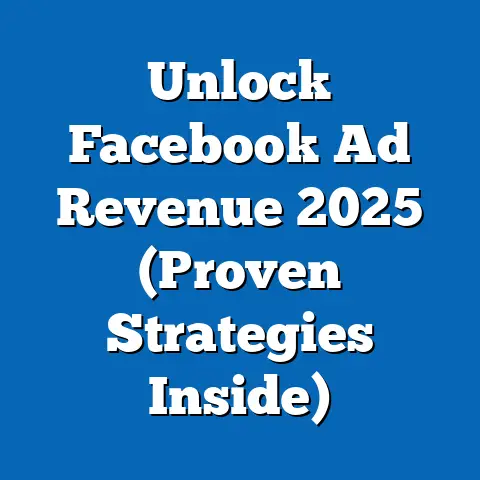Why is My Facebook Newsfeed All Ads? (Hidden Insights Revealed)
“Ugh, another ad!” Sound familiar? I bet it does. I can’t tell you how many times I’ve scrolled through my Facebook feed lately, only to be bombarded with sponsored posts and promotional content. It’s enough to make you want to throw your phone across the room, isn’t it? It feels like every other post is an ad, and it’s easy to wonder what happened to the good old days of seeing updates from friends and family.
Think of it like this: you’re buying a new jacket. You want something waterproof, right? Something that shields you from the elements. Just like a waterproof jacket protects you from the rain, we want a way to filter our newsfeeds, keeping out the constant barrage of ads and letting the content we actually care about shine through.
So, why is your Facebook newsfeed suddenly overflowing with ads? Is it just you, or is everyone experiencing this? And more importantly, is there anything you can do about it? In this article, I’m going to dive deep into the mechanics behind Facebook’s advertising algorithm and the user experience it creates. I’ll explore the rise of ads on social media, dissect how Facebook’s algorithm works, examine the role of your data, and look at different ad types and targeting strategies. By the end, you’ll have a much better understanding of why your feed is the way it is and maybe even learn a few tricks to reclaim your scrolling experience. Let’s get started!
The Rise of Ads on Social Media
Social media, once a haven for connecting with friends and sharing life updates, has undeniably transformed into a massive advertising platform. And Facebook, with its billions of users, is at the forefront of this shift. I remember when Facebook was just a place to see what your college buddies were up to. Now, it’s a complex ecosystem where organic reach is a distant memory for many businesses.
The reality is, Facebook’s business model relies heavily on advertising revenue. In the early days, businesses could reach a significant portion of their audience organically simply by posting engaging content. However, as the platform grew and more businesses joined, Facebook began to prioritize paid advertising. This shift, often referred to as the “pay-to-play” model, meant that businesses had to invest in ads to ensure their content reached their target audience.
The numbers don’t lie. Facebook’s ad revenue has skyrocketed over the years. According to Statista, Meta’s (Facebook’s parent company) advertising revenue reached over $116 billion in 2022. This growth is directly correlated with the increasing number of ads users see in their feeds. As more businesses compete for attention, Facebook serves more ads to maximize revenue.
One of the most significant factors driving this trend is the decline in organic reach. I’ve seen firsthand how difficult it’s become for businesses to reach their audience without paid advertising. The algorithm changes frequently, making it harder for organic posts to gain traction. This forces businesses to allocate a larger portion of their marketing budget to Facebook ads, further contributing to the ad-heavy experience for users.
Key Takeaway: The rise of ads on Facebook is a direct result of the platform’s business model and the increasing competition among businesses for user attention. The shift from organic reach to paid advertising has led to a significant increase in the number of ads users see in their newsfeeds.
Understanding Facebook’s Algorithm
At the heart of Facebook’s advertising dominance lies its complex and ever-evolving algorithm. This algorithm is the gatekeeper of your newsfeed, determining which posts, including ads, you see and in what order. It’s not a simple, straightforward process; it’s a sophisticated system designed to personalize your experience and keep you engaged.
The primary goal of Facebook’s algorithm is to show you content that you’re most likely to find interesting and engaging. To achieve this, it considers a wide range of factors, including:
- User Engagement Signals: This is a crucial component. The algorithm analyzes your past interactions – likes, shares, comments, and even the amount of time you spend viewing a post – to predict what you’ll engage with in the future. If you consistently like posts from a particular page, the algorithm is more likely to show you their content, including ads.
- Relevancy Score: Facebook assigns a relevancy score to each ad based on how relevant it believes the ad is to you. This score is influenced by factors like your demographics, interests, and online behavior. Ads with higher relevancy scores are more likely to be shown to you.
- Content Type: The algorithm also considers the type of content being shared. Are you more likely to engage with videos, images, or text-based posts? Facebook uses this information to prioritize the content format you prefer.
- Recency: Newer content tends to rank higher in the newsfeed than older content. This ensures that you’re seeing the most up-to-date information.
- Relationship: The algorithm prioritizes content from people and pages you interact with frequently. This means you’re more likely to see posts from your close friends and family.
Facebook utilizes machine learning and data analytics to constantly refine its algorithm. I’ve seen how this works behind the scenes. The platform analyzes vast amounts of user data to identify patterns and trends. This data is then used to train the algorithm to make more accurate predictions about what content you’ll find engaging. For example, if you frequently search for hiking gear and visit outdoor recreation websites, the algorithm might start showing you ads for hiking equipment or outdoor apparel.
It’s important to remember that the algorithm is not static. Facebook regularly updates it to improve its performance and address user feedback. These updates can sometimes lead to significant changes in the content you see in your newsfeed.
Key Takeaway: Facebook’s algorithm is a complex system that determines what content appears in your newsfeed. It considers a wide range of factors, including user engagement signals, relevancy scores, content type, recency, and relationship. The algorithm is constantly being refined through machine learning and data analytics.
The Role of User Data
Your data is the fuel that powers Facebook’s advertising engine. The platform collects a vast amount of information about you, which is then used to create a detailed profile for targeted advertising. This data collection happens through various channels:
- User Interactions: Every time you like, share, comment, or click on a link on Facebook, you’re providing the platform with valuable data. These interactions reveal your interests, preferences, and opinions.
- Profile Information: The information you provide in your Facebook profile, such as your age, gender, location, education, and job title, is also used for targeted advertising.
- Third-Party Sources: Facebook also collects data from third-party sources, such as websites and apps that use Facebook Pixel or Facebook Login. This allows the platform to track your online activity even when you’re not actively using Facebook.
All this data is aggregated and analyzed to create detailed user profiles. Advertisers can then use these profiles to target specific demographics, interests, and behaviors. This allows them to show ads to people who are most likely to be interested in their products or services.
The use of user data for targeted advertising has raised significant concerns about privacy. I remember the Cambridge Analytica scandal, which highlighted the potential for misuse of user data. Many users are unaware of the extent to which their data is being collected and used.
In response to these concerns, data regulations like the General Data Protection Regulation (GDPR) and the California Consumer Privacy Act (CCPA) have been implemented. These regulations give users more control over their data and require companies to be more transparent about how they collect and use it. Facebook has also introduced new privacy features, such as the ability to view and manage your ad preferences.
However, despite these efforts, many users remain concerned about the privacy implications of targeted advertising. It’s important to be aware of the data that Facebook collects about you and to take steps to manage your privacy settings.
Key Takeaway: User data plays a crucial role in shaping ad experiences on Facebook. The platform collects a vast amount of information about you, which is then used to create detailed user profiles for targeted advertising. While data regulations and privacy features have been introduced, concerns about privacy remain.
Types of Ads and Targeting Strategies
Facebook offers a wide variety of ad formats to cater to different marketing objectives. Here are some of the most common types of ads you’ll encounter in your newsfeed:
- Image Ads: These are simple ads that feature a single image and accompanying text. They’re effective for showcasing products or services in a visually appealing way.
- Video Ads: Video ads are becoming increasingly popular on Facebook. They’re more engaging than image ads and can be used to tell stories or demonstrate how a product works.
- Carousel Ads: Carousel ads allow you to showcase multiple images or videos in a single ad unit. This format is ideal for highlighting different features of a product or telling a story in a sequential manner.
- Collection Ads: Collection ads are designed for e-commerce businesses. They feature a main image or video along with a selection of related products.
- Lead Ads: Lead ads are used to collect leads directly from Facebook. They allow users to submit their contact information without leaving the platform.
- Sponsored Posts: These are organic posts from pages that have been boosted with paid advertising. They appear in your newsfeed just like regular posts from friends and family.
Advertisers use various targeting strategies to ensure their ads reach the right audience. Some of the most common targeting options include:
- Demographic Targeting: This allows advertisers to target users based on their age, gender, location, education, and job title.
- Interest-Based Targeting: Advertisers can target users based on their interests, hobbies, and activities. This is determined by the pages they like, the groups they join, and the content they engage with on Facebook.
- Behavioral Targeting: This allows advertisers to target users based on their online behavior, such as their purchase history, website visits, and app usage.
- Retargeting: Retargeting allows advertisers to show ads to people who have previously interacted with their website or app. This is a highly effective strategy for driving conversions.
- Custom Audiences: Advertisers can create custom audiences by uploading their own customer data, such as email addresses or phone numbers. This allows them to target their existing customers on Facebook.
- Lookalike Audiences: Lookalike audiences allow advertisers to reach new people who are similar to their existing customers. This is a great way to expand your reach and find new potential customers.
I’ve seen countless ad campaigns over the years, and the most effective ones are those that combine a compelling ad format with precise targeting. For example, a local restaurant might use a video ad showcasing their delicious food and target it to people who live within a certain radius of the restaurant and have expressed an interest in food or dining out.
Key Takeaway: Facebook offers a wide variety of ad formats and targeting strategies. Advertisers can use these tools to create highly targeted campaigns that reach the right audience with the right message.
User Perception and Sentiment
The increasing number of ads in Facebook newsfeeds has undoubtedly impacted user perception and sentiment. While some users understand the need for advertising to support the platform, others find the constant barrage of ads frustrating and intrusive.
Common complaints regarding the frequency and relevance of ads include:
- Too Many Ads: Many users feel that there are simply too many ads in their newsfeeds, making it difficult to see content from friends and family.
- Irrelevant Ads: Users often complain about seeing ads that are not relevant to their interests or needs. This can be particularly frustrating when the ads are based on inaccurate or outdated information.
- Intrusive Ads: Some users find certain ad formats, such as pop-up ads or auto-playing video ads, to be intrusive and disruptive.
- Privacy Concerns: As discussed earlier, many users are concerned about the privacy implications of targeted advertising. They feel that their data is being used without their consent and that they have little control over the ads they see.
I’ve seen countless comments and posts on social media expressing these sentiments. For example, one user tweeted, “My Facebook feed is nothing but ads these days. I’m starting to think I should just delete the app.” Another user wrote, “I keep seeing ads for products I already bought. It’s so annoying!”
However, not all users have a negative perception of Facebook ads. Some users find them helpful and informative, particularly when they’re relevant to their interests. For example, if you’re planning a trip to a new city, you might appreciate seeing ads for hotels, restaurants, and attractions in that area.
The key to creating a positive ad experience is relevance. When ads are relevant to your interests and needs, they’re more likely to be perceived as helpful rather than intrusive.
Key Takeaway: User perception of Facebook ads is mixed. While some users find them helpful and informative, others find them frustrating and intrusive. The key to creating a positive ad experience is relevance.
Conclusion
So, why is your Facebook newsfeed all ads? As we’ve explored, it’s a complex issue with multiple contributing factors. The rise of ads on social media, Facebook’s sophisticated algorithm, the use of user data for targeted advertising, and the wide variety of ad formats and targeting strategies all play a role.
Just like a waterproof jacket shields you from the rain, we need a way to filter our newsfeeds, keeping out the constant barrage of ads and letting the content we actually care about shine through. While you can’t completely eliminate ads from your Facebook feed, you can take steps to manage your ad preferences, adjust your privacy settings, and provide feedback to Facebook about the ads you see.
The future of advertising on social media is uncertain. As users become more aware of the privacy implications of targeted advertising, they may demand more control over their data and ad experiences. Facebook will need to continue to innovate and adapt to meet these changing expectations. For now, understanding the mechanics behind the ad-heavy experience is the first step towards reclaiming your scrolling experience.

